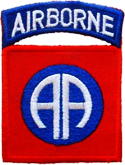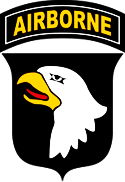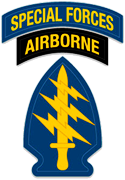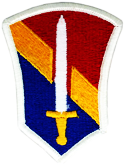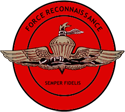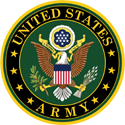
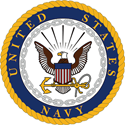
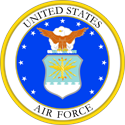
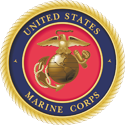
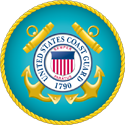
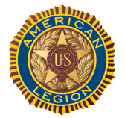
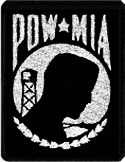

| Home | About Us | Officers | Auxiliary | Sons | Membership |
| Programs | Events | Galleries | Links | Flag | Newsletters |
| Contact | Shirts | Member Bus | Supporters |
|
Woodstock, NY American Legion Post 1026 10 Hillcrest Avenue Woodstock NY 12498 (845) 679-8401 |
|
Flag Etiquette In our area Woodstock Post 1026 supports; Flag Day is Monday June 14th. Please fly your flags with pride and encourage your neighbors to do the same. Turn in all retired American Flags to the Post before Flag Day. Contact Commander Kevin Ryan for more information at: ryanrecon322@aol.com Most American Legion Posts regularly conduct a dignified flag burning ceremony, often on Flag Day, June 14th. Many Cub Scout Packs, Boy Scout Troops, and Girl Scout Troops retire flags regularly as well. Contact your local American Legion Hall or Scout Troop to inquire about the availability of this service. Flag Laws and Regulations The laws relating to the flag of the United States of America are found in detail in the United States Code. Title 4, Chapter 1 pertains to the flag and seal, seat of Government and the States; Title 18, Chapter 33 pertains to crimes and criminal procedures; Title 36, Chapter 10 pertains to patriotic customs and observances. These laws were supplemented by Executive Orders and Presidential Proclamations. Title 36, Chapter 10 PATRIOTIC CUSTOMS §171. National anthem; Star-Spangled Banner, conduct during playing During rendition of the national anthem when the flag is displayed, all present except those in uniform should stand at attention facing the flag with the right hand over the heart. Men not in uniform should remove their headdress with their right hand and hold it at the left shoulder, the hand being over the heart. Persons in uniform should render the military salute at the first note of the anthem and retain this position until the last note. When the flag is not displayed, those present should face toward the music and act in the same manner they would if the flag were displayed there. §172. Pledge of Allegiance to the flag; manner of delivery The Pledge of Allegiance to the Flag, "I pledge allegiance to the Flag of the United States of America, and to the Republic for which it stands, one Nation under God, indivisible, with liberty and justice for all.", should be rendered by standing at attention facing the flag with the right hand over the heart. When not in uniform men should remove their headdress with their right hand and hold it at the left shoulder, the hand being over the heart. Persons in uniform should remain silent, face the flag, and render the military salute. §173. Display and Use of flag by civilians; codification of rules and customs; definition The following codification of existing rules and customs pertaining to the display and use of the flag of the United States of America is established for the use of such civilians or civilian groups or organizations as may not be required to conform with regulations promulgated by one or more executive departments of the Government of the United States. The flag of the United States for the purpose of this chapter shall be defined according to Title 4, United States Code, chapter 1, section 1 and section 2 and Executive Order 10834 issued pursuant thereto. §174. Time and occasions for display (a) It is the universal custom to display the flag only from sunrise to sunset on buildings and on stationary flagstaffs in the open. However, when a patriotic effect is desired, the flag may be displayed twenty-four hours a day if properly illuminated during the hours of darkness. (b) The flag should be hoisted briskly and lowered ceremoniously. (c) The flag should not be displayed on days when the weather is inclement, except when an all weather flag is displayed. (d) The flag should be displayed on all days, especially on New Year's Day, January 1; Inauguration Day, January 20; Lincoln's Birthday, February 12; Washington's Birthday, third Monday in February; Easter Sunday (variable), Mother's Day, second Sunday in May; Armed Forces Day, third Saturday in May: Memorial Day (half-staff until noon), the last Monday in May; Flag Day, June 14; Independence Day, July 4; Labor Day, first Monday in September; Constitution Day, September 17; Columbus Day, second Monday in October; Navy Day, October 27; Veterans Day, November 11; Thanksgiving Day, fourth Thursday in November; Christmas Day, December 25; and such other days as may be proclaimed by the President of the United States; the birthdays of States (date of admission); and on State holidays. (e) The flag should be displayed daily on or near the main administration building of every public institution. (f) The flag should be displayed in or near every polling place on election days. (g) The flag should be displayed during school days in or near every schoolhouse. §175. Position and manner of display The flag, when carried in a procession with another flag or flags, should be either on the marching right; that is, the flag's own right, or, if there is a line of other flags, in front of the center of that line. (a) The flag should not be displayed on a float in a parade except from a staff, or as provided in subsection (i) of this section. (b) The flag should not be draped over the hood, top, sides, or back of a vehicle or of a railroad train or a boat. When the flag is displayed on a motorcar, the staff shall be fixed firmly to the chassis or clamped to the right fender. (c) No other flag or pennant should be placed above or, if on the same level, to the right of the flag of the United States of America, except during church services conducted by naval chaplains at sea, when the church pennant may be flown above the flag during church services for the personnel of the Navy. No person shall display the flag of the United Nations or any other national or international flag equal, above, or in a position of superior prominence or honor to, or in place of, the flag of the United States at any place within the United States or any Territory or possession thereof. Provided, That nothing in this section shall make unlawful the continuance of the practice heretofore followed of displaying the flag of the United Nations in a position of superior prominence or honor, and other national flags in positions of equal prominence or honor, with that of the flag of the United States at the headquarters of the United Nations. (d) The flag of the United States of America, when it is displayed with another flag against a wall from crossed staffs, should be on the right, the flag's own right, and its staff should be in front of the staff of the other flag. (e) The flag of the United States of America should be at the center and at the highest point of the group when a number of flags of States or localities or pennants of societies are grouped and displayed from staffs. (f) When flags of States, cities, or localities, or pennants of societies are flown on the same halyard with the flag of the United States, the latter should always be at the peak. When the flags are flown from adjacent staffs, the flag of the United States should be hoisted first and lowered last. No such flag or pennant may be placed above the flag of the United States or to the United States flag's right. (g) When flags of two or more nations are displayed, they are to be flown from separate staffs of the same height. The flags should be of approximately equal size. International usage forbids the display of the flag of one nation above that of another nation in time of peace. (h) When the flag of the United States is displayed from a staff projecting horizontally or at an angle from the window sill, balcony, or front of a building, the union of the flag should be placed at the peak of the staff unless the flag is at half staff. When the flag is suspended over a sidewalk from a rope extending from a house to a pole at the edge of the sidewalk, the flag should be hoisted out, union first, from the building. (i) When displayed either horizontally or vertically against a wall, the union should be uppermost and to the flag's own right, that is, to the observer's left. When displayed in a window, the flag should be displayed in the same way, with the union or blue field to the left of the observer in the street. (j) When the flag is displayed over the middle of the street, it should be suspended vertically with the union to the north in an east and west street or to the east in a north and south street. (k) When used on a speaker's platform, the flag, if displayed flat, should be displayed above and behind the speaker. When displayed from a staff in a church or public auditorium, the flag of the United States of America should hold the position of superior prominence, in advance of the audience, and in the position of honor at the clergyman's or speaker's right as he faces the audience. Any other flag so displayed should be placed on the left of the clergyman or speaker or to the right of the audience. (l) The flag should form a distinctive feature of the ceremony of unveiling a statue or monument, but it should never be used as the covering for the statue or monument. (m) The flag, when flown at half-staff, should be first hoisted to the peak for an instant and then lowered to the half-staff position. The flag should be again raised to the peak before it is lowered for the day. On Memorial Day the flag should be displayed at half-staff until noon only, then raised to the top of the staff. By order of the President, the flag shall be flown at half-staff upon the death of principal figures of the United States Government and the Governor of a State, territory, or possession, as a mark of respect to their memory. In the event of the death of other officials or foreign dignitaries, the flag is to be displayed at half-staff according to Presidential instructions or orders, or in accordance with recognized customs or practices not inconsistent with law. In the event of the death of a present or former official of the government of any State, territory, or possession of the United States, the Governor of that State, territory, or possession may proclaim that the National flag shall be flown at half-staff. The flag shall be flown at half-staff thirty days from the death of the President or a former President; ten days from the day of death of the Vice President, the Chief Justice or a retired Chief Justice of the United States, or the Speaker of the House of Representatives; from the day of death until interment of an Associate justice of the Supreme Court, a Secretary of an executive or military department, a former Vice President, or the Governor of a State, territory, or possession; and on the day of death and the following day for a Member of Congress. As used in this subsection (1) the term "half-staff" means the position of the flag when it is one-half the distance between the top and bottom of the staff; (2) the term "executive or military department" means any agency listed under sections 101 and 102 of title 5, United States Code; and (3) the term "Member of Congress" means a Senator, a Representative, a Delegate, or the Resident Commissioner from Puerto Rico. (n) When the flag is used to cover a casket, it should be so placed that the union is at the head and over the left shoulder. The flag should not be lowered into the grave or allowed to touch the ground. (o) When the flag is suspended across a corridor or lobby in a building with only one main entrance, it should be suspended vertically with the union of the flag to the observer's left upon entering. If the building has more than one main entrance, the flag should be suspended vertically near the center of the corridor or lobby with the union to the north, when entrances are to the east and west or to the east when entrances are to the north and south. If there are entrances in more than two directions, the union should be to the east. §176. Respect for the Flag No disrespect should be shown to the flag of the United States of America; the flag should not be dipped to any person or thing. Regimental colors, State flags, and organization or institutional flags are to be dipped as a mark of honor. (a) The flag should never be displayed with the union down, except as a signal of dire distress in instances of extreme danger to life or property. (b) The flag should never touch anything beneath it, such as the ground, the floor, water, or merchandise. (c) The flag should never be carried flat or horizontally, but always aloft and free. (d) The flag should never be used as wearing apparel, bedding, or drapery. It should never be festooned, drawn back, nor up, in folds, but always allowed to fall free. Bunting of blue, white, and red, always arranged with the blue above, the white in the middle, and the red below, should be used for covering a speaker's desk, draping the front of the platform, and for decoration in general. (e) The flag should never be fastened, displayed, used, or stored in such a manner as to permit it to be easily torn, soiled, or damaged in any way. (f) The flag should never be used as a covering for a ceiling. (g) The flag should never have placed upon it, nor on any part of it, nor attached to it any mark, insignia, letter, word, figure, design, picture, or drawing of any nature. (h) The flag should never be used as a receptacle for receiving, holding, carrying, or delivering anything. (i) The flag should never be used for advertising purposes in any manner whatsoever. It should not be embroidered on such articles as cushions or handkerchiefs and the like, printed or otherwise impressed on paper napkins or boxes or anything that is designed for temporary use and discard. Advertising signs should not be fastened to a staff or halyard from which the flag is flown. j) No part of the flag should ever be used as a costume or athletic uniform. However, a flag patch may be affixed to the uniform of military personnel, firemen, policemen, and members of patriotic organizations. The flag represents a living country and is itself considered a living thing. Therefore, the lapel flag pin being a replica, should be worn on the left lapel near the heart. (k) The flag, when it is in such condition that it is no longer a fitting emblem for display, should be destroyed in a dignified way, preferably by burning. §177. Conduct during hoisting, lowering or passing of flag During the ceremony of hoisting or lowering the flag or when the flag is passing in a parade or in review, all persons present except those in uniform should face the flag and stand at attention with the right hand over the heart. Those present in uniform should render the military salute. When not in uniform, men should remove their headdress with their right hand and hold it at the left shoulder, the hand being over the heart. Aliens should stand at attention. The salute to the flag in a moving column should be rendered at the moment the flag passes. §178. Modification of rules and customs by President Any rule or custom pertaining to the display of the flag of the United States of America, set forth herein, may be altered, modified, or repealed, or additional rules with respect thereto may be prescribed, by the Commander in Chief of the Armed Forces of the United States, whenever he deems it to be appropriate or desirable; and any such alteration or additional rule shall be set forth in a proclamation. FLAG PRESENTATION Presentation of the flag during a ceremony should be preceded by a brief talk emphasizing the importance of the occasion. Following the presentation all present should salute the flag, recite the pledge of allegiance, and sing the national anthem. FOLDING THE FLAG 1. Two persons, facing each other, hold the flag waist high and horizontally between them. 2. The lower striped section is folded, lengthwise, over the blue field. Hold bottom to top and edges together securely. 3. Fold the flag again, lengthwise, folded edge to open edge. 4. A triangular fold is started along the length of the flag, from the end to the heading by bringing the striped corner of the folded edge to meet the open edge. 5. The outer point is turned inward parallel with the open edge, forming a second triangle. 6. Repeat the triangular folding until the entire length of the flag is folded. 7. When the flag is completely folded only the triangular blue field should be visible. CARE OF YOUR FLAG The life of your flag depends on your care. Dirt can cut fabrics, dull colors, and cause wear. Most outdoor flags can be washed in mild detergent and thoroughly rinsed. Indoor and parade flags should be dry-cleaned. Many dry cleaners offer free cleaning of U.S. flags during the months of June and July. Damaged flags can be repaired and utilized as long as the overall dimensions are not noticeably altered. American Legion Posts and local governments often have facilities to dispose of unserviceable flags. Store your flags in a well ventilated area away from any harsh chemicals or cleaning compounds. If your flag gets wet, never store it until it is completely dry. Wet folds cause permanent creases. Dampness ruins fabric and causes mildew. Pole care is also related to flag care. Rust and scale cause permanent stains and some metallic oxides actually eat holes in fabric. SIZES OF FLAGS The size of the flag is determined by the exposed height of the flagpole from which it is flying. The only consideration is for the flag to be in proper proportion to its pole. Flags which fly from angled poles on homes and those which are displayed on standing poles in offices and other indoor displays are usually either 3' x 5' or 4' x 6'. Color guards usually carry flags measuring 4' x 6'. Other recommended sizes are shown in the following table: Flagpole Height (ft.), Flag Size (ft.) 20, 4 x 6 25, 5 x 8 40, 6 x 10 50, 8 x 12 60, 10 x 15 70, 12 x 18 90, 15 x 25 125, 20 x 30 200, 30 x 40 250, 40 x 50 FLAGS AT THE UNITED STATES CAPITOL No record has been found for the earliest date the flag was flown over the east and west fronts of the Capitol. Early engravings and lithographs in the office of the Architect of the Capitol show flags flying on either side of the original low dome above the corridors connecting the areas now known as Statuary Hall and the Old Senate Chamber. After the addition of the new House and Senate wings in the 1850s, even before the great dome was completed in 1863, photographs of the period show flags flying over each new wing and the central east and west fronts. The custom of flying the flags 24 hours a day over the east and west fronts was begun during World War I. This was done in response to requests received from all over the country urging that the flag of the United States be flown continuously over the public buildings in Washington, DC. The east and west front flags, which are 8 x 12 feet, are replaced by new ones when they become worn and unfit for further use. Prior to machine-made flags, individuals were hired by the Congress to handsew these flags. Presidential proclamations and laws authorize the display of the flag 24 hours a day at the following places: Fort McHenry National Monument and Historic Shrine, Baltimore, Maryland (Presidential Proclamation No. 2795, July 2, 1948). Flag House Square, Albemarle and Pratt Streets, Baltimore Maryland (Public Law 83-319, approved March 26, 1954). United States Marine Corp Memorial (Iwo Jima), Arlington, Virginia (Presidential Proclamation No. 3418, June 12, 1961). On the Green of the Town of Lexington, Massachusetts (Public Law 89-335, approved November 8, 1965). The White House, Washington, DC. (Presidential Proclamation No. 4000, September 4, 1970). Washington Monument, Washington, DC. (Presidential Proclamation No. 4064, July 6, 1971, effective July 4, 1971). Fifty flags of the United States are displayed at the Washington Monument continuously. United States Customs Ports of Entry which are continually open (Presidential Proclamation No. 413 1, May 5, 1972). Grounds of the National Memorial Arch in Valley Forge State Park, Valley Forge, Pennsylvania (Public Law 94-53, approved July 4,1975). Many other places fly the flag at night as a patriotic gesture by custom. HOW TO OBTAIN A FLAG FLOWN OVER THE CAPITOL Constituents may arrange to purchase flags that have been flown over the Capitol by getting in touch with their Senators or Representative. A certificate signed by the Architect of the Capitol accompanies each flag. Flags are available for purchase in sizes of 3' x 5' or 5' x 8' in fabrics of cotton and nylon. Each year on June 14, we celebrate the birthday of the Stars and Stripes, which came into being on June 14, 1777. At that time, the Second Continental Congress authorized a new flag to symbolize the new Nation, the United States of America. The Stars and Stripes first flew in a Flag Day celebration in Hartford, Connecticut in 1861, during the first summer of the Civil War. The first national observance of Flag Day occurred June 14, 1877, the centennial of the original flag resolution. By the mid 1890's the observance of Flag Day on June 14 was a popular event. Mayors and governors began to issue proclamations in their jurisdictions to celebrate this event. In the years to follow, public sentiment for a national Flag Day observance greatly intensified. Numerous patriotic societies and veterans groups became identified with the Flag Day movement. Since their main objective was to stimulate patriotism among the young, schools were the first to become involved in flag activities. In 1916 President Woodrow Wilson issued a proclamation calling for a nationwide observance of Flag Day on June 14. It was not until 1949 that Congress made this day a permanent observance by resolving "That the 14th day of June of each year is hereby designated as Flag Day . The measure was signed into law by President Harry Truman. Although Flag Day is not celebrated as a Federal holiday, Americans everywhere continue to honor the history and heritage it represents. Website |
